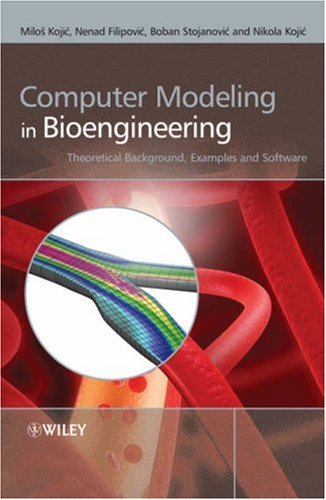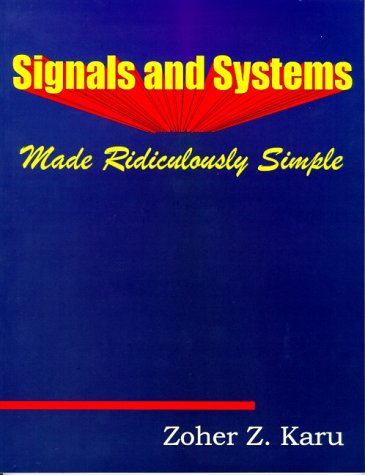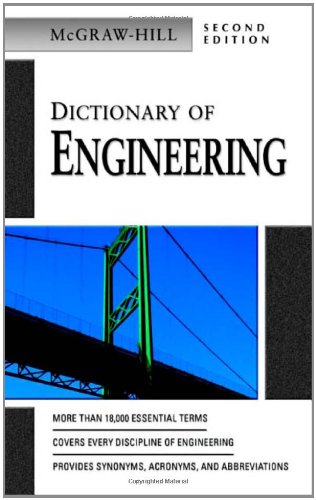Milos Kojic, Nenad Filipovic, Boban Stojanovic, Nikola Kojic9780470060353, 0470060352
Computer Modeling in Bioengineering offers a comprehensive reference for a large number of bioengineering topics, presenting important computer modeling problems and solutions for research and medical practice. Starting with basic theory and fundamentals, the book progresses to more advanced methods and applications, allowing the reader to become familiar with different topics to the desired extent. It includes unique and original topics alongside classical computational modeling methods, and each application is structured to explain the physiological background, phenomena that are to be modeled, the computational methods used in the model, and solutions of typical cases. The accompanying software contains over 80 examples, enabling the reader to study a topic using the theory and examples, then run the software to solve the same, or similar examples, varying the model parameters within a given range in order to investigate the problem at greater depth. Tutorials also guide the user in further exploring the modeled problem; these features promote easier learning and will help lecturers with presentations.
Computer Modeling in Bioengineering includes computational methods for modelling bones, tissues, muscles, cardiovascular components, cartilage, cells and cancer nanotechnology as well as many other applications. It bridges the gap between engineering, biology and medicine, and will appeal not only to bioengineering students, lecturers and researchers, but also medical students and clinical researchers.
Table of contents :
Computer Modeling in Bioengineering……Page 3
Contents……Page 9
Contributors……Page 17
Preface……Page 19
Part I Theoretical Background of Computational Methods……Page 23
1.1 Matrix representation of mathematical objects……Page 25
1.2 Basic relations in matrix algebra……Page 26
1.3 Definition of tensors and some basic tensorial relations……Page 28
1.4 Vector and tensor differential operations and integral theorems……Page 30
1.5 Examples……Page 33
2.1.1 Stress……Page 37
2.1.2 Strain and strain rate……Page 41
2.1.3 Examples……Page 43
2.2.1 Linear elastic constitutive law……Page 48
2.2.2 Viscoelasticity……Page 51
2.2.4 Examples……Page 52
2.3.1 Formulation of the principle of virtual work……Page 59
2.3.2 Examples……Page 60
2.4 Nonlinear continuum mechanics……Page 62
2.4.1 Deformation gradient and the measures of strain and stress……Page 63
2.4.2 Nonlinear elastic constitutive relations……Page 67
2.4.3 Examples……Page 69
3.1 Heat conduction……Page 73
3.1.1 Governing relations……Page 74
3.1.2 Examples……Page 75
3.2.1 Differential equations of diffusion……Page 77
3.2.2 Examples……Page 79
3.3 Fluid flow of incompressible viscous fluid with heat and mass transfer……Page 80
3.3.1 Governing equations of fluid flow and of heat and mass transfer……Page 81
3.3.2 Examples……Page 82
3.4 Fluid flow through porous deformable media……Page 85
3.4.1 The governing equations……Page 86
3.4.2 Examples……Page 88
Part II Fundamentals of Computational Methods……Page 91
4.1 Introduction to the finite element method……Page 93
4.2.1 Truss finite element……Page 95
4.2.2 Equilibrium equations of the FE assemblage and boundary conditions……Page 100
4.2.3 Examples……Page 102
4.3.1 Element formulation……Page 103
4.3.2 Examples……Page 106
4.4 Two-dimensional (2D) isoparametric finite elements……Page 107
4.4.1 Formulation of the elements……Page 108
4.4.2 Examples……Page 111
4.5 Isoparametric shell finite element for general 3D analysis……Page 113
4.5.1 Basic assumptions about shell deformation……Page 114
4.5.2 Formulation of a four-node shell element……Page 116
4.5.3 Examples……Page 117
5.1 Introduction to dynamics of structures……Page 121
5.2 Differential equations of motion……Page 122
5.3 Integration of differential equations of motion……Page 123
5.4 System frequencies and modal shapes……Page 125
5.5 Examples……Page 126
6.1 Introduction……Page 131
6.2.1 Discrete system……Page 135
6.2.2 Principle of virtual work for a continuum……Page 136
6.2.3 Finite element model……Page 137
6.2.4 Finite element model with logarithmic strains……Page 139
6.3 Examples……Page 140
7.1 Introduction……Page 143
7.1.2 The Galerkin method……Page 144
7.2.1 The finite element equations……Page 146
7.2.2 Examples……Page 147
7.3.1 The finite element equations……Page 149
7.3.2 Examples……Page 150
7.4.1 The finite element equations……Page 151
7.4.2 Examples……Page 155
7.5.1 The ALE formulation……Page 157
7.5.2 Examples……Page 160
7.6 Solid–fluid interaction……Page 161
7.6.1 Loose coupling method……Page 162
7.6.2 Examples……Page 163
7.7.1 Finite element balance equations……Page 165
7.7.2 Examples……Page 167
8.1.1 Introduction……Page 169
8.1.2 Differential equations of motion and boundary conditions……Page 170
8.1.3 Examples……Page 172
8.2.1 Introduction to mesoscale DPD modeling……Page 173
8.2.2 Basic DPD equations……Page 174
8.2.3 Examples……Page 176
8.3.1 Introduction to multiscale modeling……Page 177
8.3.2 Basic equations and boundary conditions……Page 178
8.3.3 Examples……Page 182
8.4.2 The basic equations of the SPH method……Page 183
8.5.1 Introduction……Page 186
8.5.2 Formulation of the EFG method……Page 187
8.5.3 Examples……Page 190
Part III Computational Methods in Bioengineering……Page 193
9.1 The subject and scope of bioengineering……Page 195
9.2.1 Computational models……Page 197
9.2.2 Future advances in computer modeling……Page 199
10.1.1 The structure of bone tissue……Page 203
10.1.2 The form of bones……Page 205
10.1.3 Osteoporosis and bone density……Page 206
10.2 The mechanical properties of bone and FE modeling……Page 207
10.3.1 General considerations……Page 209
10.3.2 Fracture treatment……Page 210
10.3.3 FE modeling of femur comminuted fracture……Page 212
10.4.1 Solutions by parallel screws and by dynamic hip implant……Page 216
10.4.2 Finite element models of intracapsular fractures of the femoral neck……Page 217
11.1.1 Structure and function of biological tissue……Page 223
11.1.2 Basic experiments and mechanical models……Page 225
11.2.1 General concept of computational procedures……Page 229
11.2.2 Biaxial models of membranes, hardening and hysteretic behavior, action of surfactant……Page 231
11.2.3 Use of strain energy functions……Page 237
11.3 Examples……Page 239
12.1.1 Basic physiology of muscle mechanics……Page 249
12.1.2 Basics of muscle finite element modeling……Page 253
12.2.1 Hill’s phenomenological model……Page 256
12.2.2 Determination of stresses within muscle fiber……Page 257
12.2.3 Hill’s model which includes fatigue……Page 261
12.2.4 An extension of Hill’s model to include different fiber types……Page 264
12.3 Examples……Page 267
13.1.1 The circulatory system……Page 271
13.1.2 Blood……Page 273
13.1.3 Blood vessels……Page 277
13.2.1 Introduction……Page 278
13.2.2 Methods of blood flow modeling in large blood vessels……Page 279
13.2.3 Modeling the deformation of blood vessels……Page 282
13.2.4 Blood–blood vessel interaction……Page 283
13.3.1 Introduction……Page 284
13.3.2 Finite element model of the aorta……Page 285
13.3.3 Results and discussion……Page 286
13.4.1 Introduction……Page 287
13.4.2 Modeling of blood flow within the AAA……Page 289
13.4.3 Results……Page 290
13.5.1 Introduction……Page 292
13.5.2 Finite element model of the carotid artery bifurcation……Page 293
13.5.3 Example solutions……Page 295
13.6.1 Femoral artery anatomical and physiological considerations and endovascular solutions……Page 298
13.6.2 Analysis of the combined effects of the surrounding muscle tissue and inner blood pressure to the arterial wall with implanted stent……Page 300
13.7.1 Introduction……Page 304
13.7.2 Modeling blood flow through the veins……Page 305
13.8.1 Description of heart functioning……Page 308
13.8.2 Computational model……Page 311
14.1 Introduction……Page 317
14.2.1 The basic relations for mass transport in arteries……Page 319
14.2.2 Finite element modeling of diffusion–transport equations……Page 320
14.2.3 Examples……Page 321
14.3.1 Model description……Page 324
14.3.2 Examples……Page 326
14.4.1 General considerations……Page 328
14.4.2 Examples……Page 330
15.1 Introduction……Page 335
15.2.1 Basic physical quantities, swelling pressure and electrokinetic coupling……Page 338
15.2.2 Equations of balance……Page 340
15.3.1 Finite element balance equations……Page 342
15.4 Examples……Page 344
16.1 Introduction to mechanics of cells……Page 353
16.2.1 Stabilizing influence of CSK prestress – cellular tensegrity model……Page 356
16.2.2 Mathematical model of a six-strut tensegrity structure……Page 358
16.2.3 Biphasic models……Page 361
16.3 Examples: modeling of cell in various mechanical conditions……Page 362
17 Extracellular Mechanotransduction: Modeling Ligand Concentration Dynamics in the Lateral Intercellular Space of Compressed Airway Epithelial Cells……Page 371
17.1.1 Introduction……Page 372
17.1.2 The EGF–receptor autocrine loop in the LIS……Page 373
17.1.3 Modeling the effects of compressive stress on epithelial cells in vitro……Page 374
17.2.1 Introduction……Page 378
17.2.2 Finite element model of dynamic diffusion……Page 379
17.2.3 Exploring the parameter space of the diffusion equation……Page 381
17.3.1 Introduction……Page 384
17.3.2 Finite element model of coupled diffusion and convection……Page 385
17.3.3 Exploring the parameter space of the governing equations……Page 388
17.3.4 Rate sensitivity of extracellular mechanotransduction……Page 390
17.3.5 HB-EGF vs. TGF-alpha concentration dynamics……Page 394
17.3.6 Discussion……Page 397
18 Spider Silk: Modeling Solvent Removal during Synthetic and Nephila clavipes Fiber Spinning……Page 401
18.1.1 Introduction……Page 402
18.1.2 Numerical procedure……Page 403
18.1.3 Example……Page 408
18.2.1 Introduction……Page 410
18.2.2 Governing process during synthetic solvent removal……Page 412
18.2.3 Numerical modeling of synthetic internal solvent diffusion……Page 414
18.2.4 Example: Synthetic fiber spinning……Page 416
18.3.1 Introduction……Page 419
18.3.2 Nephila water diffusion coefficient……Page 420
18.3.3 Modeling of internal water diffusion……Page 422
18.3.4 Example: The Nephila spinning canal……Page 424
19.1 Introduction……Page 429
19.2 The transport of particulates in capillaries……Page 431
19.3 The mathematical model……Page 436
19.3.1 The governing equations……Page 437
19.3.2 The initial and boundary conditions……Page 438
19.3.3 Solution for K0 and f0……Page 439
19.3.4 Solution for K1 and f1……Page 440
19.3.5 Solution for K2……Page 441
19.3.6 The velocity distribution (effect of boundary depletion of the solvent)……Page 442
19.4 The concentration profile……Page 444
19.4.1 The mean dimensionless concentration m……Page 445
19.4.2 The local dimensionless concentration ……Page 446
19.5 Comments and discussions of the analytical models and solutions……Page 449
19.6.1 Computational procedure……Page 450
19.6.2 Example – trajectories of spherical and elliptical particles……Page 451
Index……Page 455
Plates……Page 469







Reviews
There are no reviews yet.